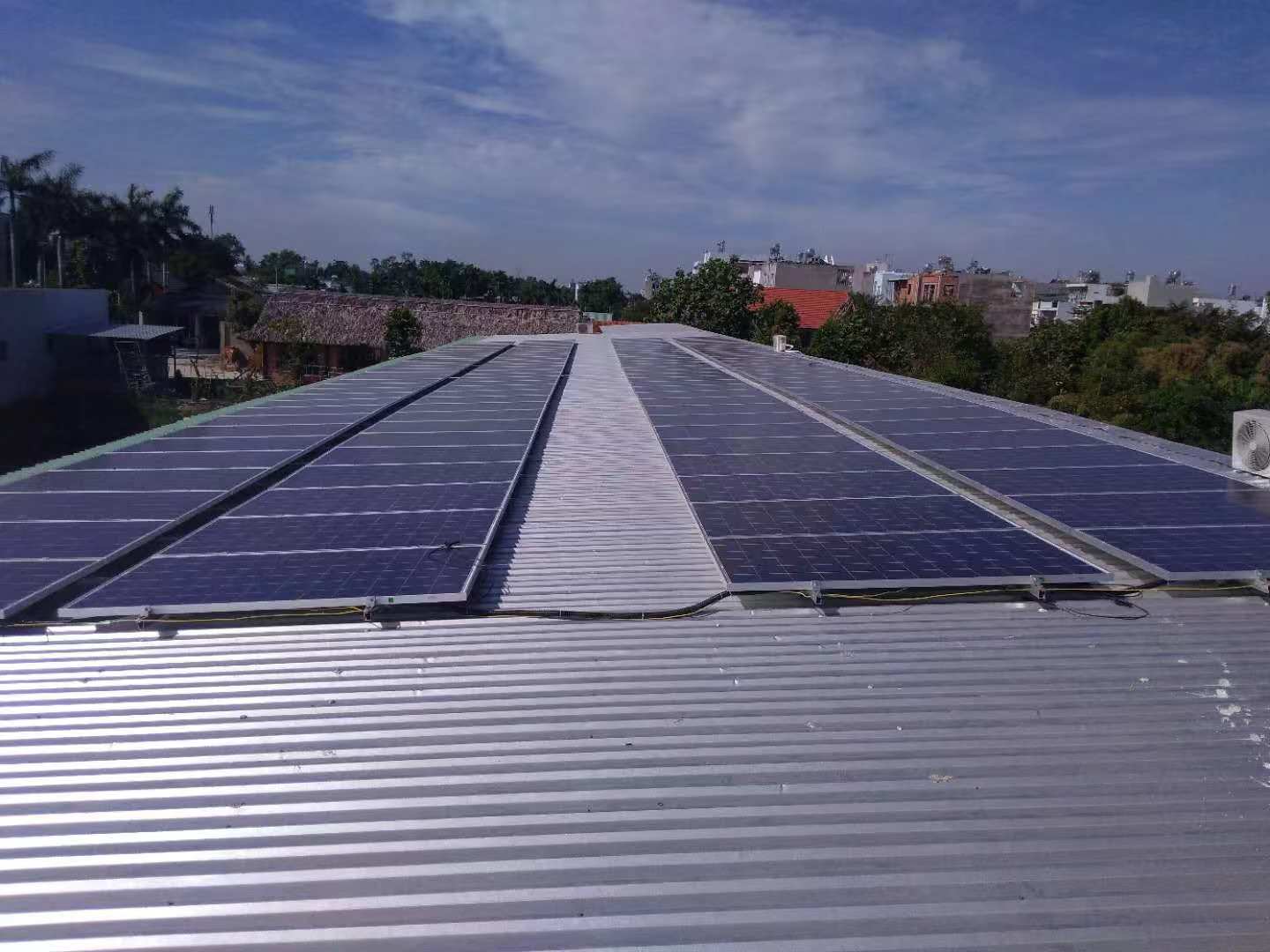Solar Array - 5 Steps on Exactly how to Size Your own Solar Power System

Photovoltaic solar panels arrive in different wattage sizes and happen to be designed to supply energy to your home. Generally, solar panels are classified by way of a rated result power which is given in M. This wattage ranking is the volume of power that a single solar panel can produce in a peak hours of sunlight. One particular of the greatest technical challenges to overcome with almost all photovoltaic installations, irrespective of configuration, will be the correct sizing of the system to meet the demands of typically the household.
The dimensions of the photovoltaic system expected varies from home to home because each homes energy usage and energy efficiency will get different. But figuring out the optimum number of panels and even total wattage of your solar technique on requires familiarity with your household consumption and some basic maths. To support gold coast solar overcome a few of these challenges, we have got come up with an easy-to-follow, step-by-step guide that will assist you to easily size your current photovoltaic system.
Stage 1. - Determine the Suns Top Hours Available Per Day
Solar panels are typically marketed by the peak watt. Once the sun is definitely at its strongest or peak power usually at midday on a clear day, it generates about 1000 m per m2 involving solar radiation directly onto the Earth's surface. One hr of maximum, or 100% sunshine obtained by the solar panel equals one comparative full sun hr. So if a solar panel is rated at say a hundred Wp (peak watts) it could supply one hundred watts of peak power at typically the brightest portion of the day time. If the common peak sun several hours for a certain location has as 4. 5 hrs, this means then that our solar panel will offer 450 watt-hours a new day of peak electricity.
Obviously the sunlight shines longer compared to 4. 5 hrs a day. Local climate data given intended for a particular place on the Globe's surface would give the solar power data regarding optimum sun hours, thus the suns intensity from sun surge to peak hrs and back along to sunset through the day is a percentage of the particular peak hours plus therefore the power output from a photovoltaic cell can also be a percentage of the utmost of these times. With regard to example, early inside the morning a 100W solar panel may only be creating 25 watts, next midday it creates the total 100 m, as well as in the day only 25 or even 30 watts once more.
Step 2. instructions Determine Your Energy Needs In Conditions Of Watts Each hour
To determine the particular required overall power rating of any photovoltaic solar system needed to power a home, the electrical energy needs in conditions of watts for every hour should 1st be evaluated. To work through Visit website , you require to do lots of homework first. Our power consumption is unique so by position and adding collectively the appliances, lighting and TV's with the hourly power specifications in terms regarding watts you are going to turn up at the complete watt-hours per day time you need.
The last power rating in the solar system then can be calculated and measured, based on the particular portion of the homes electrical energy consumption to end up being given by the method. So for instance , a new system that is required to deliver 100% solar electricity would be twice the size of a system created to supply only 50% from the intake. Then a photovoltaic system can be sized to give part or all of of your electric powered consumption.
Step a few. - Optimize Your current Power Demands and even Usage
The capacity involving a photovoltaic solar system to manufacture free electrical energy is simply not unlimited. It is limited by typically the number of hours each day the sun shines and it is minimal by the actual physical area available to install the solar panels. Accidentally leaving on a light light on in the daytime may easily consume and waste unnecessary amounts of energy. Saving and reducing your energy needs by working with energy-efficient light bulbs and even appliances not just saves you money but done correctly can reduce the final dimensions and cost regarding your new solar photovoltaic system.
Solar systems are developed for a few energy consumption, and if typically the home exceeds the planned limits this particular additional energy will likely need to come from the utility grid costing you money. An energy-efficient home decreases the number of solar panels needed making the installation of the system cheaper, less complicated and lowering its payback period of time so lower the power consumption and reduce your power needs as a lot as possible.
Phase 4. - Figure out The Type involving Solar Panels You Wish To Work with
There are numerous hundreds of diverse size solar panels available to pick from including fifty watts to two hundred and fifty watts per panel at 12, twenty four or 48 volts and all with their own set involving pros and cons. The amount and form of solar panels required to get enough solar energy to support your own electrical consumption performs an important position inside the design, dimension, operating voltage plus cost of your solar photovoltaic system.
A new typical solar panel is made upward of a main grid of individual solar cells. You will discover diverse types of solar cells to look at. Monocrystalline silicon solar panels would be the many efficient at converting the suns solar energy to free of cost electricity, but these people are also the most expensive. Polycrystalline silicon panels are really slightly less effective than monocrystalline, yet they are usually less expensive since they will be cheaper to produce. Thin film solar panels will be the minimum efficient, but are in addition the cheapest. Light film solar panels are uniquely versatile as the si film is slim and versatile. Shop all-around the market for top level panels that work for you.
Step 5. -- Size Your Solar Range
To estimation how big your solar array, you'll need to have to divide typically the previously calculated complete watt-hours by the particular peak sunlight several hours you should get the overall wattage of solar panels that you'll require and then include a little extra to make up for over cast days. This offers us the whole amount of solar panels we need to be able to generate the amount of Watt-hours (or kWh) for our home in the given location. With regard to example if many of us require a 1000 watt system, that's 10 x 100 watt panels or a few x 200 voltage panels.
Since the particular solar panels will be used to be able to supply the home immediately with free solar electricity or to demand batteries, you need to determine what the moderate DC voltage with the system will end up being. Based upon the needed battery storage plus inverter sizing, typically the configuration from the solar panels could possibly be attached in a collection configuration, a seite an seite configuration or each. If you desire year-round reliability, really best to employ the lowest POWER voltage and power rating possible to reduce breakdowns and keep our solar electrical system running effortlessly and cheaply for years in order to come. The peak power rating from the solar panel you can be working with can be found in the manufacturers requirements.

Sizing a solar array is simply not because difficult since consider, but you will find 2 factors to take into account first to help make your life simpler. 1), What is the average amount of sun hours daily in your regional area (which may be found from the city lounge or library) and 2), very best every day power consumption of your current electrical loads. Typically the sunlight is typically the sunlight and right now there is not some sort of lot you can easily do to boost it, but lowering the electrical need of your house can save you a great deal of money over the years, as well as reducing the dimensions of your own solar array.
Although there are power loads that are NOT cost-effective in order to power using solar energy because their usage would be more than solar array could supply. Any weight that requires electrical power to build heat this sort of as water warming, space heating, preparing food, air conditioning, and so forth all these devices should be powered by simply other means.
